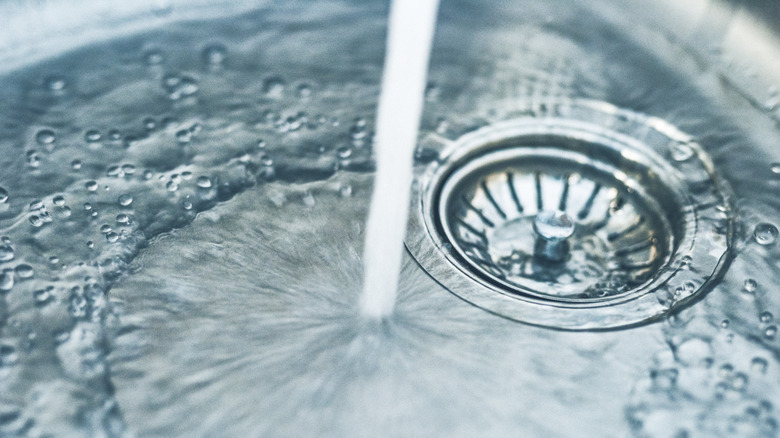Caustic Soda For Drain Cleaning
If you've ever used Drano or a similar commercial product to clear your drains, you've used caustic soda, although it's usually identified on the label as sodium hydroxide. Along with sulfuric acid, sodium hydroxide is one of the main ingredients in fast-acting commercial drain cleaners, but you'll never find these two chemicals in the same product. Sodium hydroxide is a base, and sulfuric acid is an acid; they neutralize each other when you combine them.
Drano is a popular product, so caustic soda is definitely effective for clearing drains. If you don't want to use a commercial drain cleaner, though, you could go to the store and buy caustic soda crystals to put down your drain, or you could even make your own by electrolyzing a salt solution. However, any caustic soda drain cleaner is bad for the pipes and the environment, and could even injure you, so you'd want to think twice about doing that.
Caustic Soda Uses
Caustic Soda Uses
According to Engineering Toolbox, caustic soda has a pH of 14, which is is at the upper end of the pH scale and makes it as dangerous as hydrochloric acid, found at the lower end and has a pH from 0 to 1. It cleans pipes by dissolving fats and grease into soaps, which readily dissolve in water. Caustic soda also generates heat when you dissolve it in water, and that also helps to clean the pipes.
Its ability to dissolve fats makes caustic soda good for other cleaning purposes, and it's the main ingredient in oven cleaners. In industry, the caustic soda uses are varied: it's one of the main ingredients in the manufacture of soap and paper, and it's also used to extract aluminum from ore, to cure olives and even to make aspirin. The sodium hypochlorite in household bleach is produced by reacting sodium hydroxide with chlorine.
A Caustic Soda Drain Cleaner Is a Drastic Solution
A Caustic Soda Drain Cleaner Is a Drastic Solution
If you want to make a drain cleaner with sodium hydroxide, you need to mix it with cold water. But you should do this in a plastic or glass bowl, not a metal one, because the caustic chemical reacts with metal. When you add a cup or two to a gallon of water, the mixture heats up quickly and begins to fizz. If you pour the mixture into a clogged drain, it should work through the clog in 30 minutes or less.
The problems with this approach are threefold. One problem is that the heat generated by the reaction of the crystals with water is intense, and the effect of caustic soda on plastic pipes is to melt them. It can also damage galvanized and cast iron pipes. The second problem is that the solution ends up in the waste system or the septic tank, where it can wreak environmental havoc.
The third problem occurs when the caustic soda solution doesn't actually clear the clog and remains backed up in the pipes. If you then try to clear the clog by plunging or disassembling the pipes, you could end up with a severe skin burn. To avoid this, you should pour vinegar into the drain because vinegar is acidic, and caustic soda and vinegar neutralize each other.
Safer Drain Cleaning Practices
Safer Drain Cleaning Practices
When you have a drain clog, you should always try plunging it first. Most homes have a plunger, and when used properly, it works in the vast majority of cases. When a plunger doesn't work, a drain auger usually does, and ultimately, disassembling the P-trap and clearing the pipes is always effective.
When you don't have access to the pipes, or you simply prefer using chemicals, an enzymatic drain cleaner is safer than a caustic or corrosive one. Enzymes take longer to work, but they won't pollute the septic system or the environment, they won't damage the pipes and they won't create any hazards.
Read more: How to Unclog a Drain
